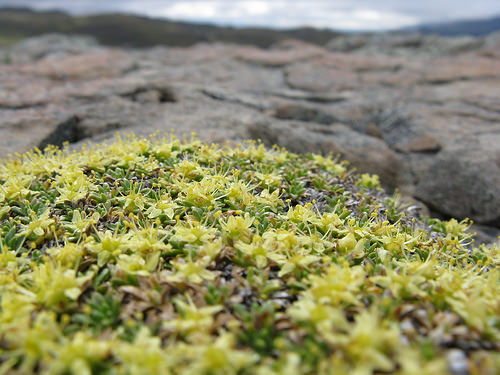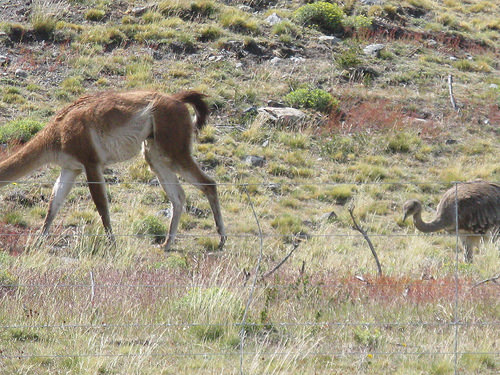I counted 24 guanacos the other day. The number in itself is not notable at all, because I often run across 75 of the llama-like creatures in one place at one time on my hikes through the park. What’s notable is my ‘24’ has become part of the official 2008 Torres del Paine guanaco census taken last week. According to the count, there are 4,600 guanacos here. That’s 800 more than last year at this time.

Three guanacos
Dr. Morty Ortega, a natural resources management professor at the University of Connecticut, has been studying guanacos in Torres del Paine since 1977. He’s here with a group of students until mid-January collecting information and invited me to participate in the census. Guanacos look funny, so I figured counting them would be entertaining.
Two
Here’s how the census worked: Over three days, groups of students scoured the sectors of the park the animals are known to inhabit, noting the number of male (machos), females (hembras) and babies (chulengas) in each group they encountered, as well as the time of their observations. For the record, there’s a more polite way of determining a guanaco’s sex than peering indiscreetly at its privates.
Usually, a lone guanaco is a male that the herd has rejected for being too sick, old or ugly. (Females, even sick, old and ugly ones, are welcomed into group activities and offered the most delicious terrain for grazing.)
When you see a group of guanacos, you can assume there’s a dominant male in charge and that there’s one hembra for each chulenga, plus maybe one or two more.
Sometimes, you’ll run across groups of young males who’ve been kicked out of their family groups for being strong enough to threaten their groups’ leader. They mostly bide their time until they can start wooing women and forming communes of their own.
When counting, it’s hard not to get distracted by the cuteness of the chulengas.
I tromped the landscape with Rebecca Weissinger, a plant biologist from the United States, and Oscar Guineo, the second ranger to arrive in the area once it was named a national park. The a 56-year-old botanist resigned as a ranger when CONAF, the semi-private forestry organization that runs Chile’s national parks, switched it’s No. 1 priority to recreation (read: money). But he still spends most of his free time in Torres del Paine and knows it like his backyard, especially the plants. He and his wife Gladys Garay, who prefers animals, conduct regular investigations and have written a book about the park’s flora and fauna (the one, incidentally, I purchased when I first arrived to Patagonia).
Once the red Toyota truck dropped us off along the gravel road that parallels Río Paine, we cut across the matorral, or the shrubland, heading south toward Lago Sarmiento. The region is not a favorite destination of guanacos because it’s inhabited mostly by spiky plants, like calafate and mata barrosa, that are painful on the tongue. Thus, a lot of walking and not many tally marks.
A plant and a rock, both inedible
Oscar looking for guanacos and finding none
Fortunately, the off-trail walk took us through some amazing terrain not seen by many.
Case in point:
And now, for some fun guanaco facts: 1. Guanacos jump fences.
2. Dominant male guanacos always defecate in the same places in order to build piles of caca, or poop, that mark their territories.
3. Female guanacos have babies between mid November and late January. They’re fertile again two weeks after giving birth, take 20-45 minutes to copulate and have a gestation period of 11 months.
4. Guanacos and rheas are friends (and they often wear matching turtlenecks to Christmas parties).











